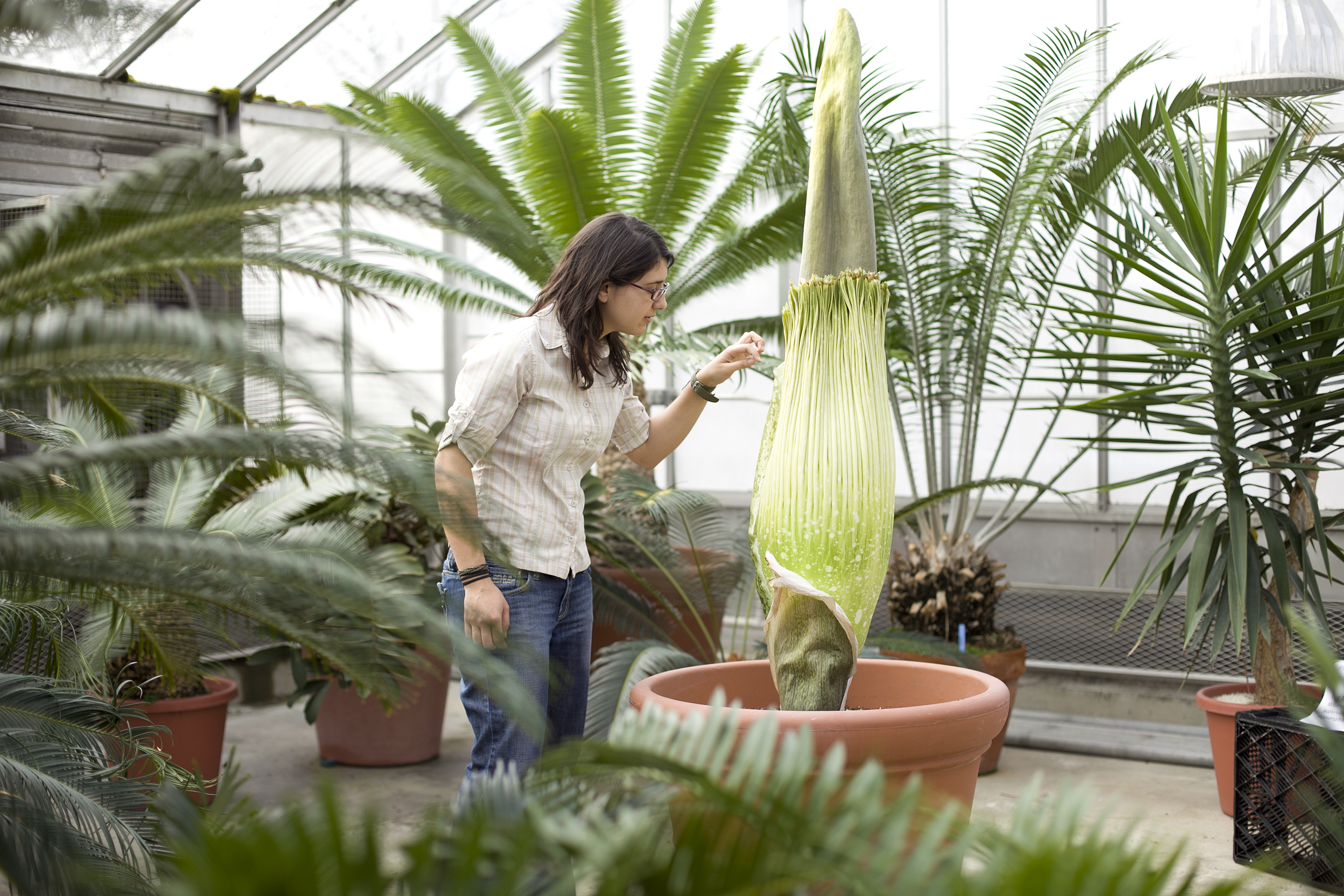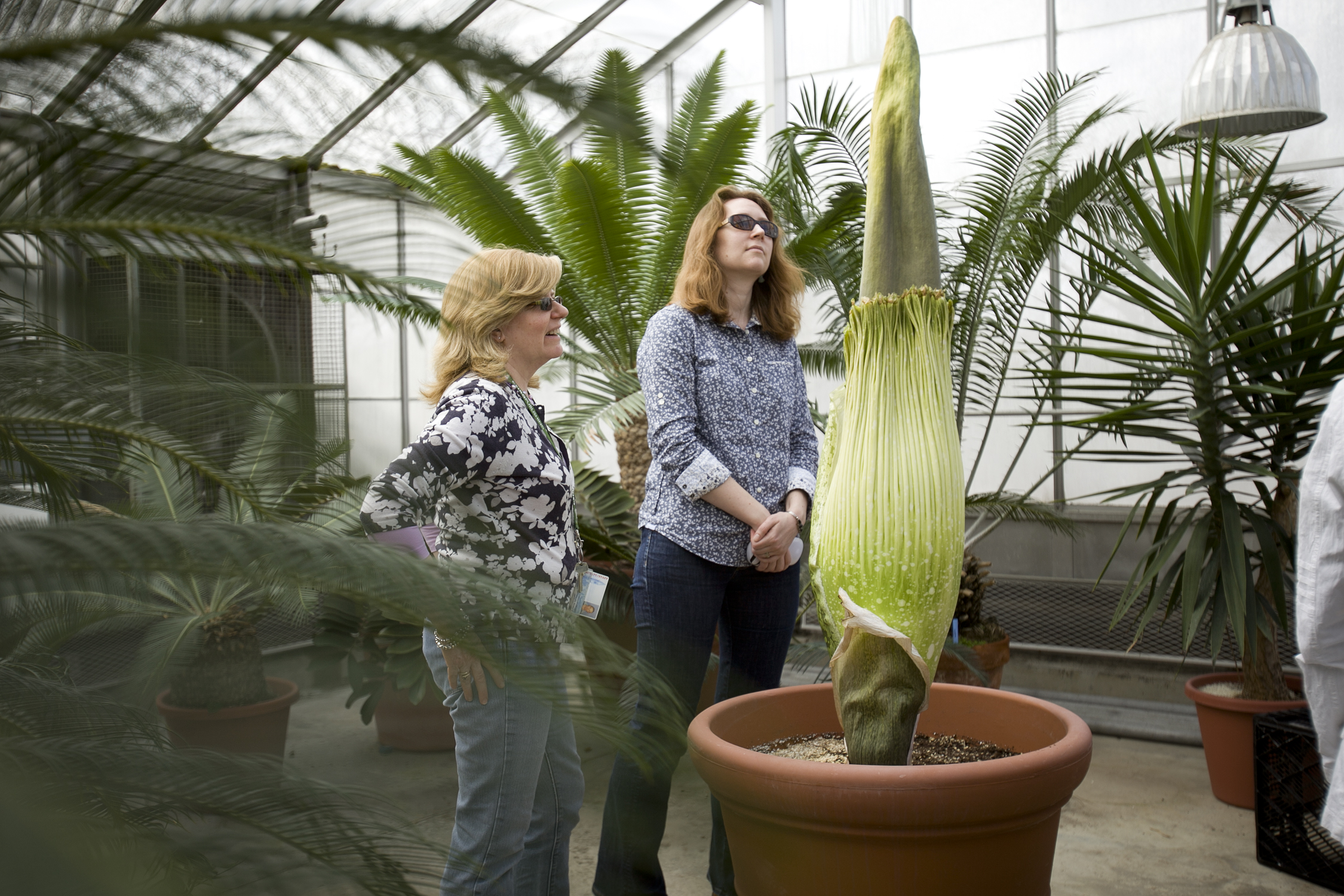
Giant Stinking Corpse Flower Set to Bloom

A rare corpse flower is expected to roll down its blood-red skirt and unleash an olfactory assault at the Cornell University greenhouse this week.
The corpse flower is technically known as an Indonesian titan arum (Amorphophallus titanum) plant. Native to the equatorial rain forests of central Sumatra in western Indonesia, these flowers are as rare as they are malodorous. They grow in the wild only in the rain forests of Sumatra and rarely bloom in cultivation. If the plant blooms, it will be one of approximately 140 such cultivated blooms recorded in history.
"It's quite an exciting experience here," said Cornell horticulturist Karl Niklas. "We've brought a little bit of Sumatra to upstate New York."

Corpse flowers can tower over the crowds that flock to see them open. The plant is about 4 feet (1.2 meters) tall today (March 13), Niklas told OurAmazingPlanet, but could grow several more feet leading up to its bloom. The plants have a feature called an inflorescence that can reach 10 feet (3 meters) or more in height.
When it does bloom, the flower emits a powerful odor that smells exactly like rotting meat. In the wild, the odor and deep purple color of the leaf that unfolds entice pollinating carrion beetles and flesh flies, which normally feed on rotting flesh. Corpse flowers first bloom around the time they are 7 to 10 years old, and then every few years or so after that. So to reproduce in the wild, a pollen-carrying fly must chance upon two blooming corpse flowers, which isn't common.
"It's a dating game," Niklas said.
A titan arum bloom lasts a few days and then dies back as the plant becomes dormant.
Sign up for the Live Science daily newsletter now
Get the world’s most fascinating discoveries delivered straight to your inbox.
The first person to discover a titan arum took seeds to plant at the Royal Botanic Gardens, Kew, in the U.K. In 1889, when the plant bloomed, Queen Victoria was ruling, but she sent a court reporter to observe the bloom. The reporter had a simple message for the queen, Niklas said.
"Ma'am, don't come. It stinks," the reporter wrote.
So that visitors can smell the bloom for themselves, Cornell is opening its greenhouse to visitors from 10:30 a.m. to 1:30 p.m. beginning today (March 13) until the bloom is complete.
You can follow OurAmazingPlanet staff writer Brett Israel on Twitter: @btisrael. Follow OurAmazingPlanet for the latest in Earth science and exploration news on Twitter @OAPlanet and on Facebook.










